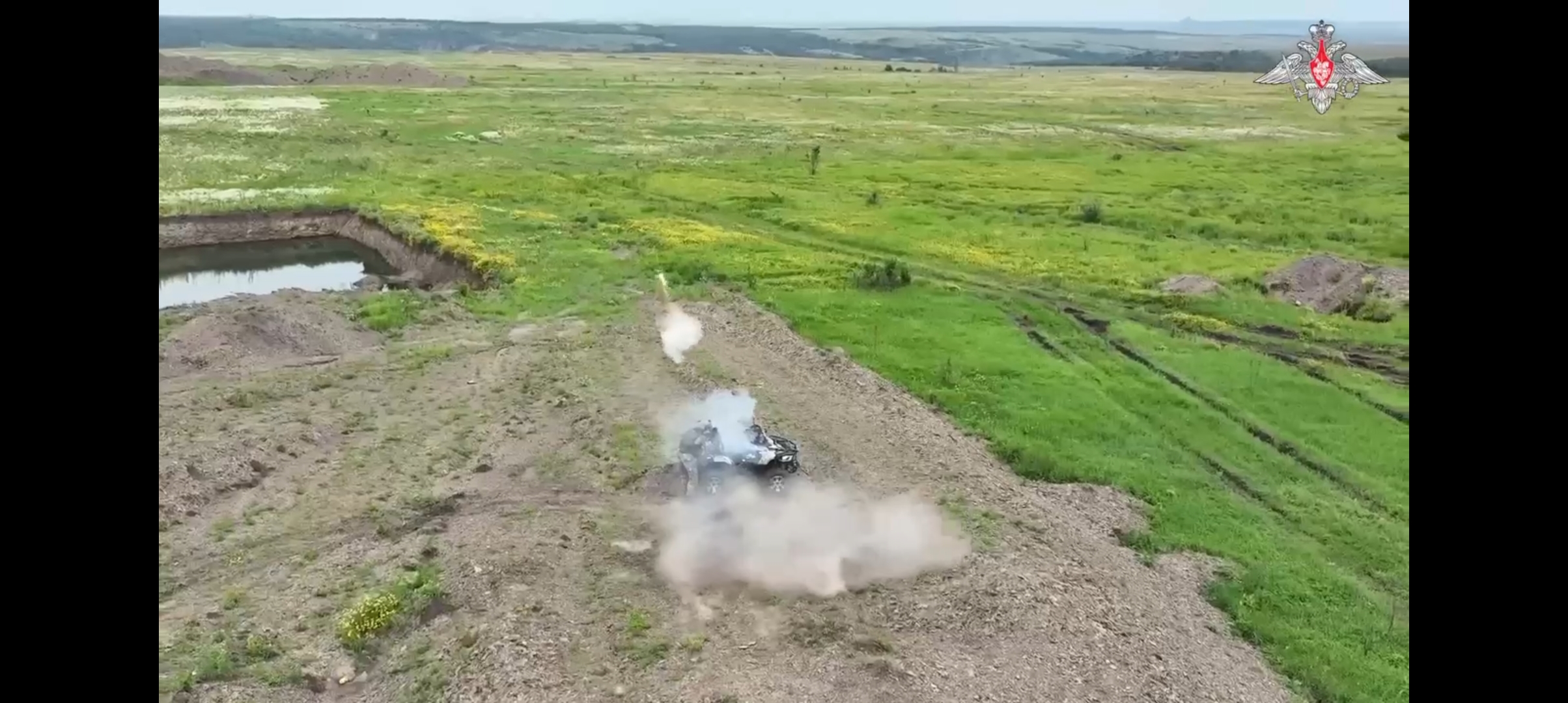Russia continues the use of All-Terrain Vehicles (ATV) armed with anti-tank guided missiles (ATGM), according to training videos released by its Ministry of Defense (RuMoD).
The rear areas of the Special Military Operation (SMO) zone show airborne troops riding ATVs on rough terrain and firing the missile on mock targets before moving away.
The small, nimble, and agile manner of carrying heavy destructive weapons on light motorized platforms seems to have become the preferred way of hitting ground targets like enemy armor and troop concentrations.
In April, the EurAsian Times reported an actual strike by one such ATV-mounted ATGM team. The RuMoD publicity video showed nearly a dozen Ukrainian troops gathered in an open field being killed when a missile hit them in the middle.
WATCH !!
Russian airborne troops practice firing anti-tank guided missiles (ATGM) from All-Terrain Vehicles (ATV) in the rear area of the special military operation (SMO) zone.#Russia #ATGM #ATV #missile #military #Ukraine pic.twitter.com/6MAIwgX7AH— EurAsian Times (@THEEURASIATIMES) July 24, 2023
The practice seems to have scored significant success. Many Armed Forces of Ukraine (AFU) soldiers and hardened targets behind the frontline must have been killed, spurring a decision to continue the practice.
Moreover, the practice seems consistent with Russia’s Airborne Forces (VDV) – a separate arm of the Russian military apart from the Russian army, navy, and air force – highly mechanized light infantry roles.
RuMoD Video
The video showed a lone paratrooper of the Airborne Troops riding the ATV with the ATGM – possibly a 9K111M Fagot-M – fixed at the rear carrier.
The soldier disembarks the vehicle after bringing the ATV to a halt at a location and then walks over to the ATGM. Then what appears to be a hammer hits a firing pin, and the missile leaves the tube with a wire spooling out from behind before hitting a target on the ground.
The ATGM is also fixed sideways on the rear carrier. The shooter has to park the ATV perpendicular to the target, walk over to the ATGM and identify, lock, and fire at the target through the optical sighting system. Given the single-shot long-distance engagement of the target, the hoist holding the rocket doesn’t have to be a turning turreted mount.

It can be assumed that depending on the mission and how contested the particular area is, the shooter can carry another spare ATGM to re-engage the same target or change directions and fire from another nearby spot.
The RuMoD described the video as Airborne Troops’ servicemen “on vehicles improving their professional skills and launch anti-tank missiles at specified targets.”
“Experienced instructors monitor the correct use of anti-tank missile systems and teach servicemen how to act on various tactical situations,” the statement added. The video showed a relatively simpler scenario where the shooter is not under the constraints of getting detected through the enemy’s aerial or ground reconnaissance means. The practice of firing resembled destroying a small enemy detachment trying to break through defensive lines by probing weaknesses.
Other “tactical situations” could mean facing a larger enemy force, which would require greater speed and quieter handling of the ATV and possibly firing the Fagot from a longer range. Another part of the video shows a two-man team riding to a location and firing the Fagot – this time with a larger, visible optical system – at what appears to be a distant target.
Securing Russia’s Layered ‘Obstacle Belt From Hell’ Defensive Line
In both the firings, the ATV is seen going over and around what looks like man-made obstacles like large mounds, ditches, and water-filled pits.
An inference could be that these possibly represent one of the many layers of defenses preceded and succeeded by large minefields, anti-tank traps, trenches, and barbed wires that even Western Generals have observed nearly impregnable.
Additionally defended by artillery, troops in defensive lines, armor, and airpower, these deep, multilayered defenses have been cited as slowing down and possibly halting any Ukrainian counteroffensive.
Retired US Army Maj Gen Mark Kimmit described it as an “obstacle belt from hell” in a Wall Street Journal (WSJ) news feature, saying it would be nearly impossible for any Ukrainian formation to break through and get from one layer to the next.
Given this situation, the ATV teams are possibly used not as an offensive weapon but as a light and mobile ground reconnaissance-strike platform, where it detects equally stealthy small adversary teams attempting to breach or find a breach in the defenses.
- The author can be reached at satamp@gmail.com
- Follow EurAsian Times on Google News




